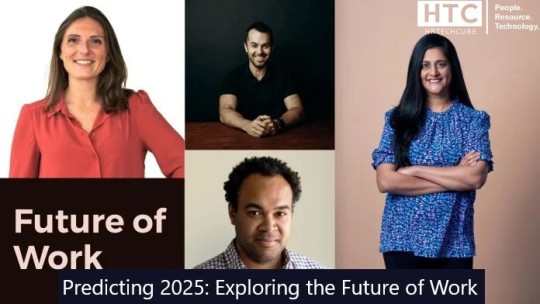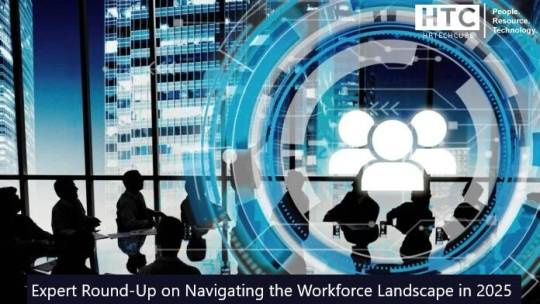#Employee experience
Explore tagged Tumblr posts
Text

We’re excited to feature Bhagvati Prasad in this month’s Employee Spotlight! Bhagvati shares his unique experiences, from overcoming challenges to driving innovation within our team.
His journey is a testament to dedication and passion, and we’re proud to have him with us. Read on to learn from his valuable insights and experiences.
2 notes
·
View notes
Text
10 QUESTIONS YOU SHOULD ASK DURING YOUR NEXT MARKETING INTERVIEW

Marketing jobs are only getting more competitive and standing out is becoming harder than ever. You’ve got the resume and the interview, but what is one simple way to stand out from your competition: ask the right questions.
While it can be intimidating to flip the script and ask the interviewer questions, it’s important because finding a job is a two-way street. In order to have success, you need to ensure that you’ll gel with the team, be challenged and fit in culturally. Now’s your chance to learn about the people you’d be working with, management style and your role (the job description may not have outlined everything!) Just as you would answer interview questions, stay positive in your questions to the hiring manager. Ask 3-5 questions, depending on time and tailor them based on the research and information on the role available.
What type of person succeeds here?
What are the current goals of the company and how does this position fit in?
If I were offered the position, what could I do to be considered a stellar performer and to exceed your expectations?
How would you measure success for this role?
If I started tomorrow, what would my top two priorities be?
What is the biggest challenge someone will face in this job in the first six months?
What are the top three qualities you are looking for in the person you hire to join this company?
What would a typical day look like for this role?
What sort of management style would you say you have?
What’s your preferred style off communicating with staff?
Notice that this list DOESN’T INCLUDE any questions about pay, benefits, background checks or promotions. Focus on this role and exuding a positive attitude on what you can bring to this role, not what you’d get out of working for the company. It is important to listen when the interviewer is speaking. You want to avoid asking one of these questions if it has already been addressed in the interview! For more information or resources, check out OUR WEBSITE or LINKEDIN PAGE. And as always, use a recruiter when necessary! Good luck!
3 notes
·
View notes
Text
The Future of Work: How Automation Will Shape Careers
The future of work is rapidly approaching, and predicting what it will look like in 2025 involves exploring how technology, societal shifts, and employee expectations will redefine work dynamics. From the widespread adoption of artificial intelligence (AI) and automation to changes in work environments and employee well-being, predicting 2025 offers a glimpse into the next chapter of the workplace. As companies and employees adapt to these changes, the role of leadership, technology, and culture will play pivotal roles in shaping a more flexible and innovative workforce.
The future of work is not just about remote work or AI; it’s about creating an environment where employees thrive, feel supported, and engage with their work in new ways. By exploring key trends and innovations, businesses can better prepare for the exciting and transformative future of work that lies ahead.

1. Introduction to the Future of Work
Predicting 2025 and the future of work involves understanding several interconnected trends. Technological advancements such as AI, the increase in automation, and the rise of remote and hybrid work models are at the core of this transformation. By 2025, the workplace will be characterized by flexibility, employee-centric policies, and seamless technological integration. Additionally, the changing expectations of the workforce will push organizations to adapt quickly or risk falling behind in attracting and retaining top talent.
2. The Shift to Remote and Hybrid Work Models
In 2025, remote work will have evolved into an even more integrated part of workplace culture. Hybrid models, where employees split their time between working from home and the office, will become commonplace. This shift will require companies to adapt their office spaces, invest in technology, and create new processes that support collaboration across remote and in-office teams. Organizations will need to provide tools that facilitate communication, project management, and virtual team-building activities to maintain engagement and productivity.
With remote work also comes a growing focus on maintaining a healthy work-life balance, as workers seek more flexibility in how they manage their time and responsibilities. To meet this need, businesses will focus on creating flexible schedules and offering benefits that support mental and physical well-being.
3. Artificial Intelligence and Automation in 2025
By 2025, artificial intelligence and automation will play an even more significant role in the workforce. Many repetitive, time-consuming tasks will be automated, allowing employees to focus on more strategic and creative aspects of their jobs. AI-powered tools will also assist with decision-making, data analysis, and personalized customer experiences, contributing to improved efficiency and productivity.
However, the rise of automation will require organizations to rethink how they engage with their workforce. Upskilling and reskilling initiatives will become crucial in preparing workers for new roles that AI and automation cannot perform. This shift will ensure that employees continue to add value by focusing on tasks that require human creativity, empathy, and problem-solving skills.
4. The Role of Employee Experience and Well-being
As employees’ needs and preferences evolve, the focus on employee experience will be critical in 2025. Companies will prioritize creating environments that support employee well-being—both physical and mental. Health benefits, mental health support, and flexible work arrangements will be key to attracting and retaining talent in a highly competitive job market.
Additionally, the importance of recognizing employees for their contributions will continue to grow. Employee recognition programs, career development opportunities, and an emphasis on work-life balance will all play a role in shaping positive employee experiences. Leaders will be expected to provide continuous support to help employees thrive, regardless of their location or work model.
5. Diversity and Inclusion in the Workplace of the Future
Diversity and inclusion (D&I) will remain a focal point in 2025. Organizations that prioritize inclusivity will be better positioned to foster innovation, improve employee satisfaction, and attract diverse talent. In the future of work, companies will be expected to not only hire a diverse workforce but also create an inclusive environment where everyone feels valued and respected.
Inclusive workplaces will be characterized by equal opportunities, transparent communication, and support for diverse groups, including gender, race, and socioeconomic status. As businesses recognize the value of diverse perspectives, D&I initiatives will become integrated into the very fabric of company culture.
6. Upskilling and Reskilling the Workforce
As the nature of work changes, employees will need to continuously develop new skills to stay relevant in their fields. By 2025, upskilling and reskilling will be integral parts of the employee lifecycle. Companies will invest heavily in providing learning opportunities through online courses, in-house training programs, and certifications to help workers acquire new competencies.
These initiatives will be particularly important as workers transition to new roles driven by AI, automation, and emerging technologies. Companies that support continuous learning will not only increase employee retention but also build a workforce that is more adaptable to change.
7. How Workspaces Will Evolve by 2025
Physical and virtual workspaces will continue to evolve in 2025. With the rise of remote work, traditional office spaces will be reimagined as flexible environments designed to facilitate collaboration and creativity. Many organizations will invest in smart office technology, including virtual meeting rooms, cloud-based collaboration tools, and AI-powered systems to enhance productivity.
Workplaces will also become more focused on health and sustainability, with features like ergonomic furniture, air purification systems, and green spaces becoming the norm. As the concept of “work” continues to be redefined, these adaptive spaces will cater to a variety of working styles, fostering creativity and engagement.
8. Changing Employee Expectations and Preferences
By 2025, employee expectations will have shifted significantly. The younger workforce—Gen Z and Millennials—will expect flexibility, opportunities for growth, and a strong alignment between their personal values and the organizations they work for. Companies that fail to address these expectations may struggle to attract top talent.
Employees will demand more personalized experiences, including flexible benefits packages, career development plans, and inclusive cultures. The future of work will require businesses to be more agile and responsive to the diverse needs of their workforce.
9. Preparing for the Future of Work
To succeed in 2025 and beyond, organizations must proactively prepare for the changing landscape of work. This involves investing in technology, developing flexible work policies, and ensuring employees are equipped with the skills they need to thrive. By focusing on employee experience, diversity, and continuous learning, businesses can build a workforce that is agile, engaged, and prepared for the challenges ahead.
For More Info:��https://hrtechcube.com/2025-future-of-work/
Conclusion
Predicting 2025 and the future of work requires a forward-thinking approach. As technology continues to evolve, so will the expectations and needs of employees. Businesses that embrace flexibility, invest in employee well-being, and foster inclusive and diverse environments will be well-positioned to succeed. The future of work will be driven by innovation, agility, and a focus on creating meaningful experiences for employees.
#Predicting 2025#Future of Work#workforce transformation#remote work#artificial intelligence#employee experience#automation#workplace trends#technology#HR innovation
0 notes
Text
What’s the Point of HR? A Satirical Exploration of Corporate Babysitting
Ah, the HR department. The mysterious entity lurking in the depths of every office, shrouded in bureaucracy and powered by an inexhaustible supply of vague policies and passive-aggressive emails. Officially, HR (Human Resources, for those who still believed it stood for “Helpful and Reasonable”) exists to support employees, foster workplace harmony, and ensure fair treatment. In reality, it…
#bureaucracy#corporate culture#corporate nonsense#employee experience#HR#HR department#human resources#office politics#professional life#toxic workplaces#work humour#workplace satire
0 notes
Text
"Transforming the Employee Experience: How CHROs Achieve Success with uKnowva HRMS"
In today's fast-paced business environment, the employee experience is a critical factor in attracting, retaining, and nurturing talent. Chief Human Resources Officers (CHROs) are taking center stage in this transformation by creating work environments that prioritize engagement, flexibility, and growth. With uKnowva HRMS, CHROs have access to cutting-edge tools that redefine the employee journey and drive organizational success.
1. Streamlining Onboarding for a Strong Start
First impressions matter, and uKnowva HRMS ensures a seamless onboarding experience.
Digital onboarding workflows: Simplify documentation, introductions, and initial training through automated processes.
Personalized onboarding journeys: Tailor onboarding programs to align with roles, teams, and individual needs.
2. Empowering Employees with Self-Service Portals
uKnowva HRMS puts control in the hands of employees, enhancing their overall experience.
Ease of access: Enable employees to manage tasks like leave applications, expense submissions, and performance reviews.
Transparency and convenience: Provide real-time access to payslips, schedules, and other essential resources.
3. Fostering Growth Through Learning and Development
Career development is a top priority for employees, and uKnowva HRMS supports this need.
Integrated learning platforms: Offer curated training programs, certifications, and skill development initiatives.
Progress tracking: Monitor individual and team development to align learning goals with organizational needs.
4. Enhancing Workplace Flexibility
Flexible work arrangements are now a standard expectation for employees.
Remote work support: Manage attendance, productivity, and collaboration for hybrid teams using uKnowva’s tools.
Flexi-hours and time tracking: Offer employees autonomy in managing their schedules while ensuring accountability.
5. Creating a Culture of Recognition and Rewards
Recognizing employees' contributions boosts morale and strengthens their connection to the organization.
Recognition platforms: Enable managers and peers to celebrate achievements through badges, shoutouts, and awards.
Customizable reward systems: Design programs that resonate with your organization’s values and culture.
6. Promoting Health and Well-Being
Employee well-being is essential for productivity and job satisfaction.
Wellness programs: Introduce mental health resources, fitness challenges, and other wellness initiatives.
Sentiment analysis: Use analytics to identify signs of stress or dissatisfaction and act proactively.
7. Enhancing Communication and Collaboration
Strong communication is the backbone of a positive employee experience.
Centralized communication tools: Share updates, policies, and announcements seamlessly across teams.
Collaborative platforms: Foster teamwork and connectivity, regardless of geographical locations.
8. Driving Engagement Through Feedback Mechanisms
uKnowva HRMS provides tools to ensure employees feel heard and valued.
Pulse surveys and polls: Regularly gauge employee satisfaction and gather insights for improvement.
Feedback loops: Encourage two-way communication with tools for submitting and acting on employee suggestions.
9. Using Analytics to Personalize Experiences
Data insights help CHROs craft tailored initiatives that resonate with employees.
Employee engagement metrics: Analyze trends to understand what motivates and challenges the workforce.
Predictive analytics: Anticipate employee needs, from career development opportunities to workplace perks.
10. Aligning Employee Goals with Organizational Vision
Employees thrive when they see how their contributions drive business success.
Goal-setting features: Use OKRs (Objectives and Key Results) to link individual tasks with broader company objectives.
Performance tracking: Provide clarity on progress and celebrate milestones to keep employees motivated.
Conclusion
Transforming the employee experience is no longer a luxury—it’s a necessity for CHROs aiming to build a resilient and competitive workforce. uKnowva HRMS offers an all-in-one solution that simplifies processes, enhances engagement, and empowers employees at every touchpoint.
Call to Action: Ready to transform your organization's employee experience? Explore how uKnowva HRMS can empower your workforce and help your CHRO succeed in reshaping the future of work. Get started today!
#employee learning#hrms solutions#uKnowva HRMS#employee experience#hr management#hr services#hrms software#employee expectations#hr software
0 notes
Text

Recently we were asked to run an engagement survey for an organisation that wanted to offer both a digital and paper based option. Paper-based surveys have a unique set of benefits, particularly in situations where inclusivity and privacy are essential. However, they are not without their drawbacks, especially when it comes to time, cost and environmental considerations. In our latest blog post, we explore the advantages and disadvantages of using paper-based surveys, shedding light on when they might be the right choice - or when they may hinder your data collection efforts. Click on the link to read the full article: https://rworld.co.uk/the-advantages-and-disadvantages-of-paper-based-surveys/
0 notes
Text

Employee Assistance Programs (EAPs) provide essential support for employees facing personal, family, or work-related challenges. Encouraging EAP utilization within your organization can positively impact overall well-being, productivity, and morale. Here are some ways to promote EAPs effectively:
Raise Awareness Through Communication Regularly remind employees of the availability of EAP services via emails, newsletters, and intranet posts. Clearly communicate what EAP offers—like counseling, legal advice, and financial guidance—and ensure employees understand that it's a resource for personal and professional issues.
0 notes
Text
Boosting Employee Engagement in Healthcare: A Pathway to Improved Patient Care

In the fast-paced world of healthcare, employee engagement is more critical than ever. With the ongoing challenges posed by staffing shortages and high burnout rates, fostering a culture of engagement among healthcare professionals can lead to numerous benefits — not only for the employees themselves but also for the patients they serve.
Why Employee Engagement Matters Engaged employees are more likely to deliver high-quality care, exhibit higher levels of job satisfaction, and remain with their organizations longer. Studies have shown that engaged healthcare workers lead to better patient outcomes, reduced medical errors, and increased patient satisfaction. When employees feel valued and connected to their work, they are motivated to go above and beyond for their patients and colleagues.
Strategies for Enhancing Engagement 1. Open Communication: Establishing clear channels of communication can help healthcare workers feel heard and valued. Regular check-ins and feedback sessions can foster an environment of trust and transparency.
2. Professional Development: Offering opportunities for continuing education and professional growth can significantly enhance employee morale. This can include training programs, workshops, and mentorship initiatives.
3. Recognition and Rewards: Recognizing employees for their hard work and achievements is essential. Implementing a rewards program can motivate staff and reinforce positive behavior, leading to a more engaged workforce.
4. Work-Life Balance: Promoting a healthy work-life balance is crucial in a demanding field like healthcare. Flexible scheduling and mental health support can help employees manage stress and prevent burnout.
5. Involvement in Decision-Making: Encouraging employees to participate in decision-making processes can lead to increased engagement. When healthcare workers feel they have a voice in their organization, they are more likely to be committed to its success.
The Impact of Engagement on Patient Care The connection between employee engagement and patient care cannot be overstated. Engaged employees tend to provide more compassionate and attentive care, contributing to a better overall experience for patients. This not only enhances patient outcomes but also strengthens the organization’s reputation in the community.
Investing in employee engagement in healthcare is not just a trend — it’s a necessity. By prioritizing the well-being and involvement of healthcare professionals, organizations can create a more positive work environment that ultimately benefits everyone involved. For more insights on improving employee engagement and fostering a thriving workplace culture, visit Q Reviews.
0 notes
Text
How Payroll Services Can Enhance Employee Experience?

Payroll services enhance employee experience by ensuring accurate and timely payments, reducing payroll errors, and providing easy access to pay information. Professionals offering payroll services in Oklahoma City OK automate processes, minimizing administrative burdens and allowing HR to focus on employee engagement. Additionally, features like direct deposit and self-service portals empower employees to manage their financial information efficiently, leading to increased satisfaction and productivity.
0 notes
Text
Northern Virginia Human Resource Experts Discuss the Importance of Employee Experience on Business Success
Northern Virginia's human resource experts at Smart HR emphasize that enhancing employee experience (EX) iis key to achieving business success by creating a positive work environment that fosters employee engagement, innovation, productivity, and loyalty. To learn more visit http://prsync.com/smart-hr-inc/northern-virginia-human-resource-experts-discuss-the-importance-of-employee-experience-on-business-success-4239560/
0 notes
Text
Bring Back-to-School Energy Into Your Career

Remember being a kid in August? You’ve spent the whole summer playing outside, going to the pool, and– shockingly enough–you were actually EXCITED to go back to school!
You would get a new haul of school supplies–shiny and unmarked–ready to learn. Pick out the coolest first day of school outfit you could find (butterfly clips, anyone?), and walk into your new classroom ready to catch up with your school friends about your summer adventures.
When you work year round, it’s hard to find the excitement you had as an elementary school kid on the first day of school, but here are some tips to incorporate those nostalgic feelings without riding a school bus.
Refresh your office supplies. Your desk deserves better than crumbled up looseleaf paper and promotional pens. Crack open a fresh pack of pens and get yourself a new notebook to get that “new school supply” high. PS — just because you’re an adult, it doesn’t mean you can’t use a cool superhero or animal-themed notebook!
Get a new work outfit. It might be your 3256th day of work, but you can still get a fresh “first day of school” fit. Whether it’s a new button down for the office or a new WFH sweater, new clothes can make you feel confident and ready to take on the day.
Get excited to see your work friends. You might see them everyday at your desk or on slack, but invigorate your social circle at work like a kid seeing their friends after a summer away. Ask a coworker out to lunch, send a funny gif over slack, and appreciate the people you work with!
When life seems a little monotonous, it’s important to infuse your day with a little bit of excitement–just like when you were a kid!
How are you bringing back-to-school energy to your career?
Do you have any more tips or want to learn more? CONTACT US TODAY!
0 notes
Text
What You Need to Know: Expert Round-Up on the Workforce Landscape in 2025

Table of Contents
Introduction
The Role of Technology in Shaping the Workforce
Employee Experience and Well-Being in 2025
The Impact of Artificial Intelligence on Talent Acquisition
Changing Work Models and Flexibility
Skills Development for the Future Workforce
Conclusion
Introduction
The workforce of 2025 will be shaped by several pivotal factors, including technological advancements, automation, and evolving workplace cultures. According to industry experts, businesses will need to adapt quickly to ensure they stay competitive and align with the needs of a modern workforce. Understanding the workforce landscape in 2025 is critical for organizations seeking to maintain a thriving work environment. In this article, we bring together insights from leaders in HR, technology, and organizational management to provide a comprehensive round-up of strategies for navigating these changes.
1. The Role of Technology in Shaping the Workforce
Technology has been one of the most significant drivers of change in the workforce, and by 2025, its influence will be even more pronounced. From automation to artificial intelligence (AI), technology is revolutionizing how tasks are performed and how employees interact with their roles. Experts emphasize the need for organizations to adopt tools that enhance productivity while also fostering innovation. AI, for instance, can help streamline recruitment processes, but businesses must balance this with the human element to ensure a personalized experience.
2. Employee Experience and Well-Being in 2025
The future of work is not just about what technologies are being used but also how employees feel about their work environment. Employee well-being and engagement will continue to be a top priority for organizations. In 2025, businesses will increasingly focus on creating environments that support both professional and personal growth. Experts predict that offering flexible work arrangements, promoting mental health initiatives, and integrating purpose-driven work will help attract and retain talent in a competitive job market.
3. The Impact of Artificial Intelligence on Talent Acquisition
AI is transforming how organizations recruit and hire talent. By 2025, AI-driven tools will become even more sophisticated in assessing candidate qualifications, matching them to job descriptions, and predicting future performance. However, experts caution that over-reliance on AI for talent acquisition could lead to biases if not properly monitored. The key will be to leverage AI in a way that enhances the recruitment process while maintaining fairness and inclusivity.
4. Changing Work Models and Flexibility
The traditional 9-to-5 work model is rapidly becoming a thing of the past. In 2025, flexible work arrangements, including remote work and hybrid models, will become more widespread. Experts predict that businesses will continue to embrace these models, driven by employee demand for better work-life balance. While some sectors may struggle with this shift, companies that can offer greater flexibility will be in a stronger position to attract top talent.
5. Skills Development for the Future Workforce
As technology continues to advance, there will be a growing need for workers to develop new skills, particularly in areas like data analysis, programming, and digital literacy. By 2025, organizations will need to prioritize ongoing learning and development to ensure their teams stay ahead of the curve. Experts suggest that businesses invest in upskilling programs and create opportunities for employees to grow within their roles. This commitment to skill development will help bridge the talent gap and ensure the workforce remains adaptable to new challenges.
For More Info: https://hrtechcube.com/workforce-landscape-in-2025/
Conclusion
The workforce landscape in 2025 is bound to be marked by significant advancements in technology, shifting work models, and an increased focus on employee well-being. Organizations must be proactive in adopting new technologies while fostering a workplace culture that values flexibility and continuous learning. As the work environment continues to evolve, staying ahead of these trends will be critical for businesses looking to thrive in the future.
By integrating expert advice and adapting to the evolving needs of the workforce, companies can successfully navigate the changes ahead and build a more resilient, productive, and engaged workforce.
#Workforce Landscape#Future of Work#Employee Experience#HR Technology#Workplace Transformation#Artificial Intelligence#Talent Acquisition#Workforce Management#Automation#Human Resources#The workplace landscape is rapidly evolving and is driven by demographic shifts#technological advancements#and socio-economic factors. Looking to the future#industry experts weigh in on how organizations can navigate these changes effectively.
0 notes
Text
An holistic approach to AI transformation - Sense Making with Copilot
Sense Making is such a natural task for AI and this exercise I share the results of shows that. Basically a Question and Answer approach with Copilot around best approaches to AI transformation.
In this post I’ve tried to elicit some insights using a Question and Answer approach with Copilot around best approaches to AI transformation. All still in service of the new trend report I’m working on. Some interesting observations – all of Copilot responses are in grey background. My commentary is in blue background. I only took one round of answers in both cases wanting to test efficacy at…

View On WordPress
0 notes
Text
The Importance of Conducting Regular Employee Satisfaction Surveys
In today's competitive business landscape, ensuring employee satisfaction isn't just about providing attractive benefits and competitive salaries—it's about fostering a work environment where employees feel valued, heard, and motivated. One of the most effective tools in achieving this is conducting regular Employee Satisfaction Surveys.
Introduction
Employee satisfaction directly impacts organizational success. It influences productivity, retention rates, and overall company morale. Regularly conducting surveys allows businesses to gauge employee sentiment, identify areas needing improvement, and enhance overall workplace culture.
Understanding Employee Satisfaction
Employee satisfaction encompasses how content employees are with their roles, compensation, work environment, and management. It's influenced by factors such as job security, recognition, work-life balance, and growth opportunities.
Benefits of Regular Surveys
Regular surveys provide invaluable insights into the factors affecting employee morale. They help management understand what drives or hinders satisfaction, allowing for proactive adjustments to policies and practices.
Enhancing Employee Engagement
Engagement stems from satisfaction; engaged employees are more committed and productive. Surveys uncover engagement levels and guide strategies to enhance involvement through effective communication and meaningful work.
Retention and Productivity
High employee satisfaction reduces turnover rates and associated costs. Satisfied employees are motivated to perform better, positively impacting productivity and contributing to organizational success.
Building a Positive Organizational Culture
Surveys play a pivotal role in shaping a positive culture. By addressing concerns and fostering open communication, organizations build trust and loyalty among employees, leading to a cohesive and supportive workplace.
Effective Survey Design
Designing surveys involves crafting relevant questions that solicit honest feedback. Survey frequency should balance gathering comprehensive data with respecting employees' time and avoiding survey fatigue.
Communicating Survey Results
Transparency in sharing survey results demonstrates commitment to improvement. It builds trust and allows for collaborative problem-solving between management and employees.
Addressing Challenges
Challenges like negative feedback should be embraced as opportunities for growth. Effective action plans derived from survey insights demonstrate responsiveness and commitment to employee well-being.
Measuring Success
Success metrics for surveys include improvement in satisfaction scores, reduced turnover rates, and enhanced productivity. Continuous monitoring ensures ongoing adaptation and improvement.
Technology and Tools
Utilizing advanced survey tools enhances data collection and analysis. Integrating feedback mechanisms into daily operations promotes real-time responsiveness to employee needs.
Legal and Ethical Considerations
Respecting employee privacy and confidentiality is crucial in survey administration. Adhering to legal requirements and ethical standards maintains trust and credibility.
Global Perspectives
Cultural nuances impact survey responses; understanding regional differences ensures surveys are culturally sensitive and yield meaningful insights across diverse workforces.
Future Trends
Future trends in surveying include leveraging AI for sentiment analysis and predictive analytics to forecast satisfaction levels and proactively address potential issues.
Conclusion
Regularly conducting employee satisfaction surveys is not merely a good practice but a strategic imperative for any organization committed to fostering a positive work environment and achieving sustainable growth. By listening to employees and acting on their feedback, businesses can cultivate a culture of continuous improvement and drive success.
FAQs About Employee Satisfaction Surveys
How often should employee satisfaction surveys be conducted?
Surveys should ideally be conducted annually, with pulse surveys quarterly or bi-annually for real-time insights.
What should companies do with survey results?
Companies should analyze results, identify trends, and create action plans to address areas of concern or improvement.
Are there risks to conducting employee surveys?
Risks include low participation rates or negative feedback, but these can be mitigated with transparent communication and follow-up actions.
How can small businesses benefit from conducting surveys?
Surveys help small businesses understand employee needs, improve retention rates, and foster a positive workplace environment.
What role does leadership play in survey effectiveness?
Leadership commitment to survey results and implementing changes based on feedback is critical for survey effectiveness.
0 notes
Text

How will the Employment Rights Bill 2024 impact employee engagement? 🇬🇧 On October 10th, 2024, the UK Government unveiled its Employment Rights Green Paper, citing it as "A new deal for working people." Today, companies nationwide will be deciphering the implications of this bill, but we've done the legwork for you. In our latest article, we delve into the effects on employee engagement, offering a concise summary of the bill and clarifying how employment rights and fair practices can and do influence employee engagement. Wondering how organisations can navigate this new landscape? We explore what practical steps companies and managers can take when considering how to respond to the employment rights bill. For a comprehensive overview, click here: https://rworld.co.uk/how-will-the-employment-rights-bill-2024-impact-employee-engagement/
0 notes